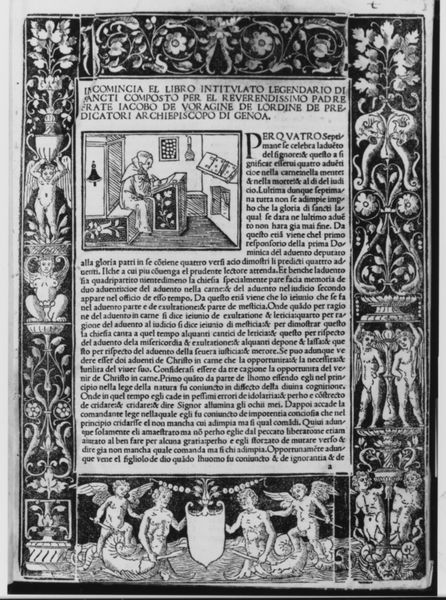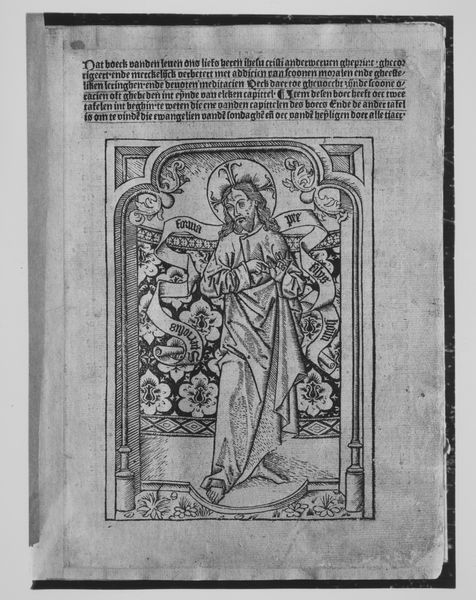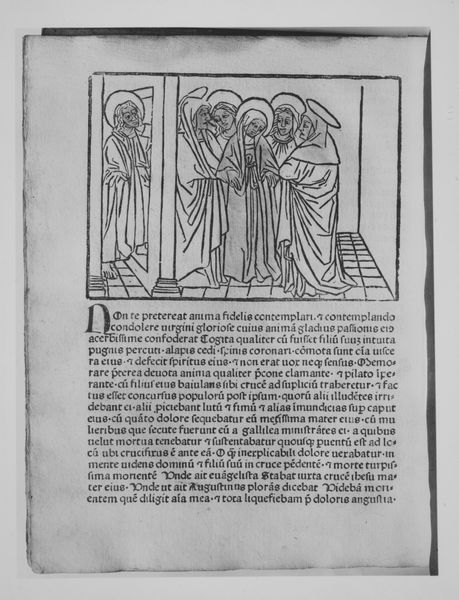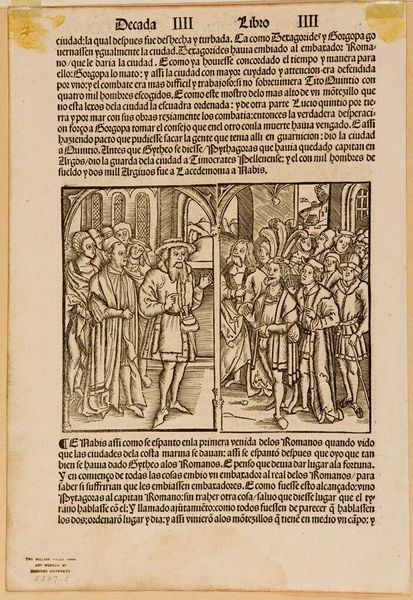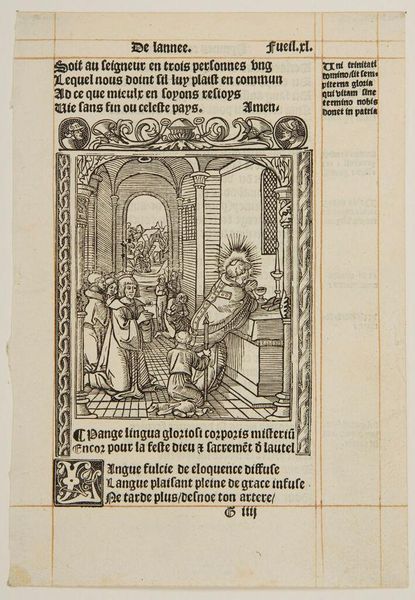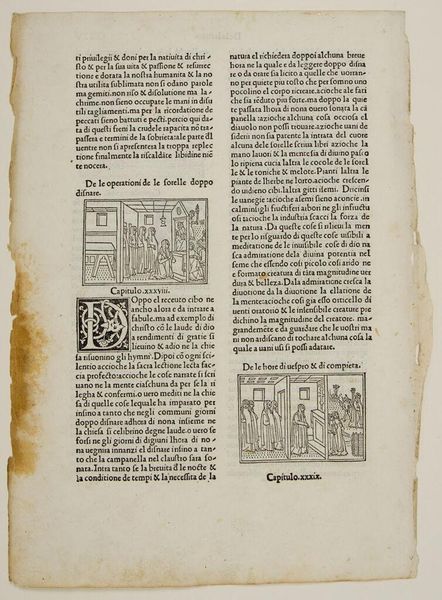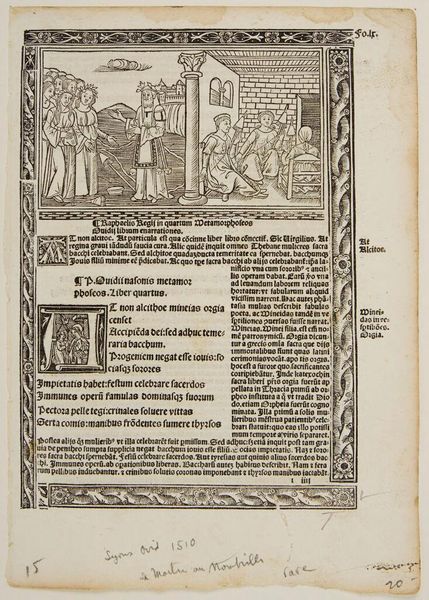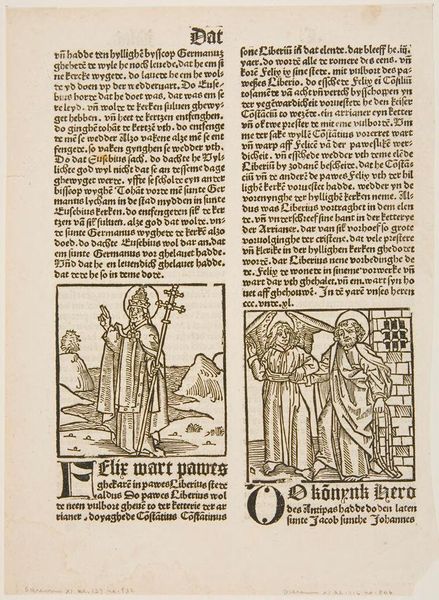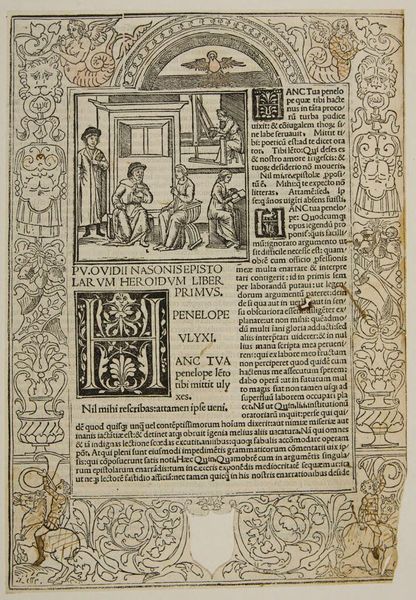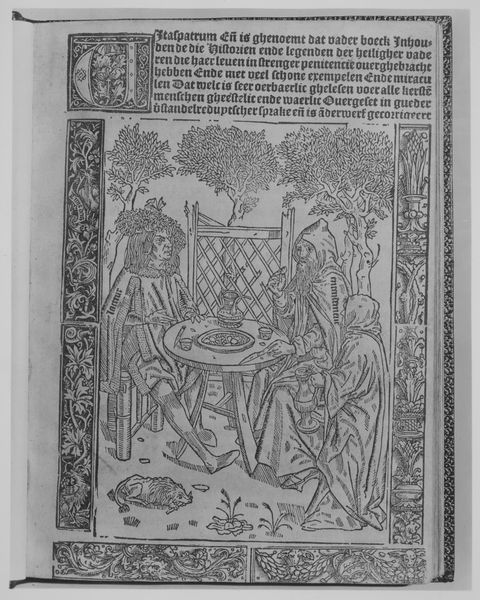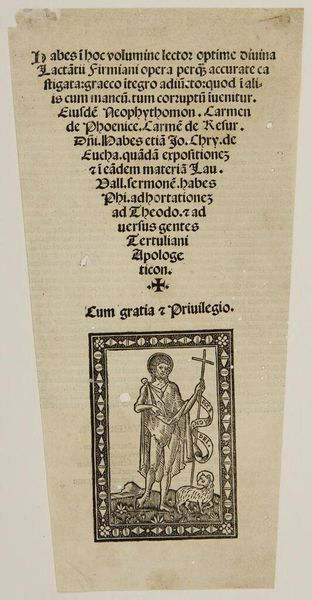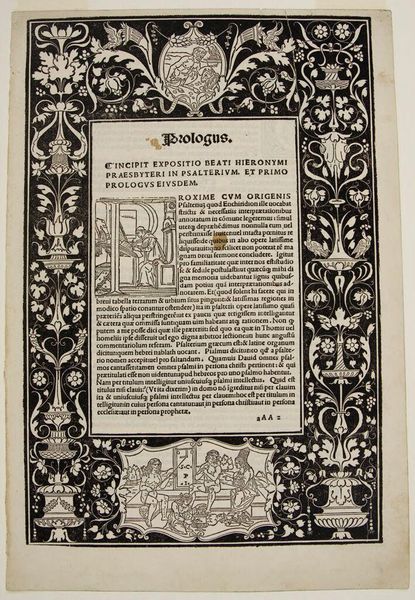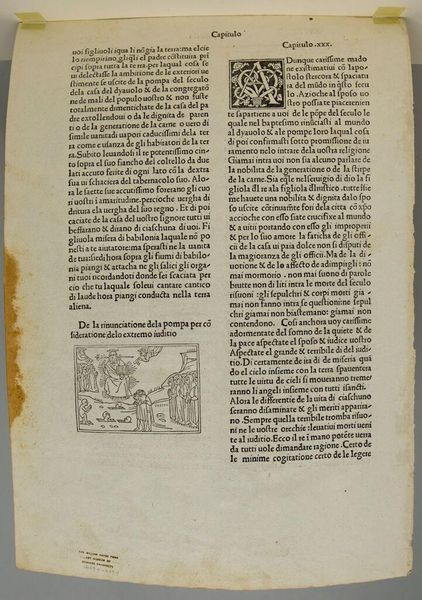
drawing, print, woodcut
#
drawing
#
medieval
#
narrative-art
# print
#
book
#
figuration
#
woodcut
#
men
#
history-painting
#
northern-renaissance
#
italian-renaissance
Copyright: Public Domain
Editor: So, this is the "Tractato in Defensione" made by Domenico Benevieni in 1496. It's a woodcut print, and I believe it's currently held at the Metropolitan Museum of Art. There's something very stark about the black and white contrast and the way the figures are rendered. How do you interpret this work? Curator: Well, first observe how Benevieni chose the woodcut. Notice its graphic weight and relative accessibility during this early moment of printmaking. Doesn't this choice broadcast an intention to broadly circulate its ideas? Look at the image closely, the figures debating in front of the Florentine architecture... What do they suggest to you? Editor: They look like they're making a point! Maybe even arguing. So is the tractatus in defense of arguments about... Florence? Curator: Precisely! More specifically, consider the title. Benevieni's "Tractato" defends the "doctrina et prophetie" – the teachings and prophecies – of Fra Gerolamo Savonarola, a controversial Dominican friar who preached fiery sermons in Florence. So it connects directly to historical context and Savonarola's attempt to reform Florence according to his religious views. Think of how the figures and text become charged symbols of that moment of cultural and religious upheaval. What impact might it have had at the time, to see it displayed so publicly? Editor: Wow, it makes so much more sense when you understand the context of Savonarola. Now the image feels less like a generic historical scene and more like a potent piece of propaganda. I’ll never look at a black-and-white image the same way. Curator: And hopefully appreciate the enduring power of images!
Comments
No comments
Be the first to comment and join the conversation on the ultimate creative platform.
